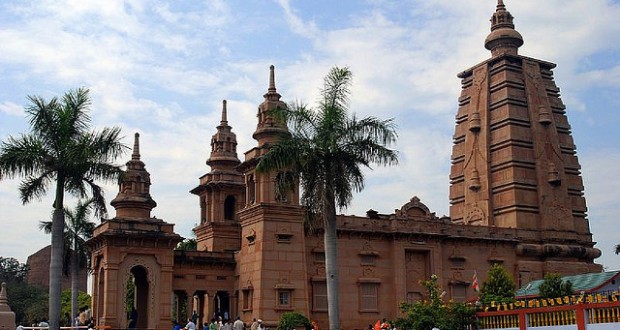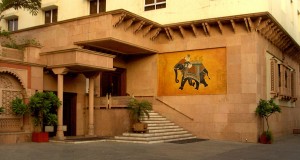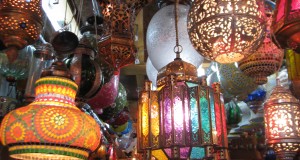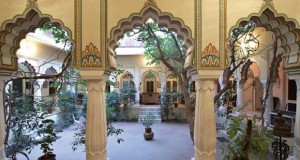Review Overview
3
Summary : Sarnath itself is a pleasant and peaceful place.
Chowkandi Stupa-Archaeological Museum-Ashoka Pillarliamekh Vihara
The ancient site of Sarnath, situated 10 km (6 miles) north of Varanasi, is a principal centre of Buddhism. It was here, around 530 BC, that the Buddha came from Bodhgaya ter gaining enlightenment and preached his first sermon in the large garden known s Deer Park. This initial message of the ‘Middle Way’ (the path of moderation jading to nirvana) became the corner-stone of the Buddhist religion.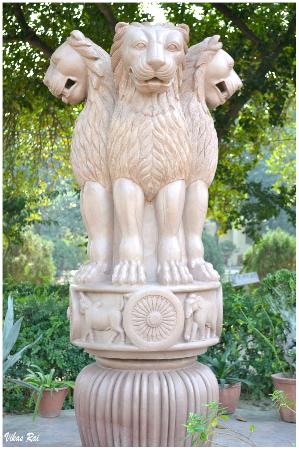
Sarnath probably gets its name from Saranganath, Lord of the Deer (one of the Buddha’s titles) and was for long known simply as the Deer Park. From the remains of the famous Dhaniekh Stupa here, originally a 31-m (100-ft) high memorial tower or stupa, it seems probable that the first monk communities came to the site around the 3rd century BC. Ashoka, the warlord turned man of peace, patronised Sarnath ca.entren of the dBudhdist religion and erected several magnificent stupas and build ings. Visiting Sarnath in AD 637, the Chinese pilgrim Hieun Tsiang described ills structures as:
In eight divisions, all enclosed within one wall with tiers of balconies and rows of halls, extremely artistic, inhabited by 1500 monks. Within the great enclosing Wall was a temple above 61 metres high, surmounted by an embossed gilt amra (mat co); in the brick portion above were more than 100 rows of niches, each containing a gilt image of the Buddha; inside the temple was a bellmetal image of the Buddha in the the attitude of preaching, as large as life.
But as early as the 3rd century AD Buddhism had fallen into decline, the squabbles , of the various splinter sects paving the way for its eventual reabsorption into the mainstream of Hindu faith and philosophy. The last of Sarnath’s great monaste CS, built by the devout Kumara Devi, Queen of Varanasi (1114-54), fell quick victi m, along with the rest, to the Muslim invasions of the 12th and 17th centuries. Toddy , the ruins of Sarnath afford only a glimpse of the magnificent monastery of Turning of the Wheel of Law described by visiting Chinese pilgrims.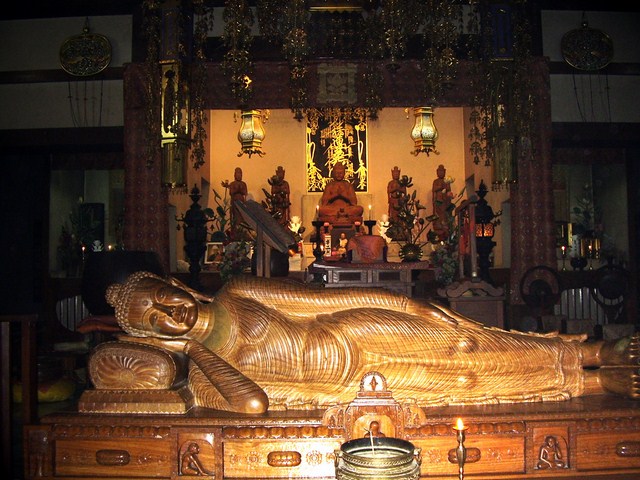
The good conducted tour round Sarnath leaves from the tourist office daily (the alternative is to go there by local bus, regular departures from Varanasi station) , It stops just before Sarnath at the modest Chowkandi Stupa. Buddhist stupas fall into three main categories: commemorative, relic and votive. This one commemorates he place of the Buddha’s reunion with his five ascetic friends. They had earlier deserted him when he accepted milk from a cowherd’s daughter, breaking his fast. The stupa is a simple redbrick octagonal structure, situated on a small hillock and erected ay Akbar in the 16th century to mark an original 5th-century site.
Sarnath itself is a pleasant and peaceful place. A charming Chinese Temple opposite the bus-stand points the way to the outstanding Archaeological Museum (open 10 am to 5 pm, except Friday, admission Rs0.50). This houses several fine recoveries from the Sarnath ruins, notably the Lion Capital which originally surmounted the huge Ashoka Pillar. Adopted by free India as her state emblem, t [is well-preserved capital was carved from a single block of stone. It features four back-to-back lions, beneath which is a four-panel band. The panels have spirit ‘d sculptures of a lion (Buddha as ‘lion king’), an elephant (Buddha’s mother, May a, dreamt of a white elephant before his birth), a horse (the one he rode away cn, abandoning princely comforts to search for truth) and a bull. The base of the capi al is an inverted lotus flower, symbolic of the seven lotus blossoms which sprang from the waters on Buddha’s death. It was constructed, along with its ex-pillar, by Asho :a in the 3rd century BC. Most of the museum’s exhibits—mainly Buddhas, 2 life-size Bodhisattvas, flowers and animals in carved sandstone—date from the Marian period of 3rd to 1st centuries BC, though there is also a selection of later Hindu imag es from the 9th to 12th centuries AD.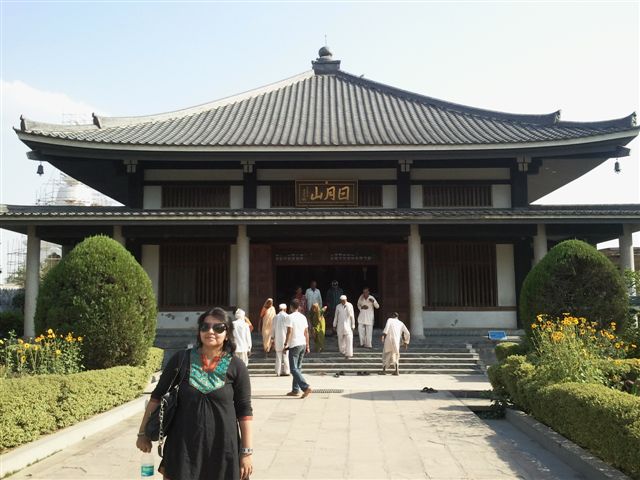
Sarnath’s ruins are pretty ruined. Of the towering Ashoka Pillar only a short jagged shard remains. The inscription on it directs the community of monks to ‘act in such a way that the sangha cannot be divided by anyone. Verily, that monk or nun who Shall break up the sangha should be compelled to put on white robes and to reside in What unfit for the residence of a recluse.’
Of the two magnificent ancient stupas for ceremonial public worship, only the Dhamekh remains standing (the other, the Dharmarajika, was dismantled in the 18th century by the Benares ruler Jagat Singh). The Dhaniekh Stupa dates back to, a round AD 500, is 338 m (110 ft) high, and is covered with interesting swastika old floral motifs. It commemorates the spot where Buddha gave his first sermon. he dIelivered it to his five closest disciples, and in it he preached the doctrine of the four ‘noble truths’ (suffering is part of life, there is always a cause for suffering, suffering can be overcome, and there are eight righteous paths by It to achieve this).
near the Dhamekh Stupa is a Jain Temple, built in the 19th century in honour of the 11 th Jain tirthankar, Sriyansanath. Also nearby 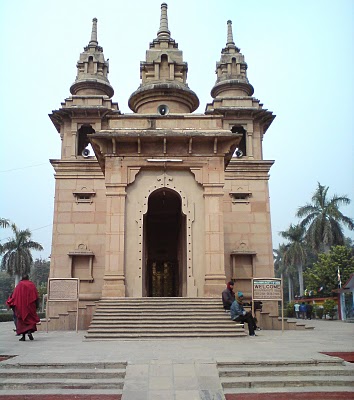 is the elegant Mulagandhakuti Vlhara, erected by the Mahabodhi Society in 1931. This is a modern temple aennciesnth rerlicisn. T-h ei snilvger casket within isaid to house the original relics of Buddha, as recovered from a 1st-century BC temple during a 19th-century aredcigh. Caonesoequloengtlyi, cit ais la major Budhist pilgrimage spot, second only importances to the Bodhi tree at Bodhgaya. The interior has a series of frescoes, depicting scenes in the Buddha’s life, painted by a famous Japanese artist. The main shrine has a graceful gold replica of the Buddha, modelled on an original 5th-century AD statue.
is the elegant Mulagandhakuti Vlhara, erected by the Mahabodhi Society in 1931. This is a modern temple aennciesnth rerlicisn. T-h ei snilvger casket within isaid to house the original relics of Buddha, as recovered from a 1st-century BC temple during a 19th-century aredcigh. Caonesoequloengtlyi, cit ais la major Budhist pilgrimage spot, second only importances to the Bodhi tree at Bodhgaya. The interior has a series of frescoes, depicting scenes in the Buddha’s life, painted by a famous Japanese artist. The main shrine has a graceful gold replica of the Buddha, modelled on an original 5th-century AD statue.
There is a Tourist Bungalow at Sarnath (tel 42002, 42515) rooms Rs50 single, Rs80 double for those who wish to stay here overnight.

